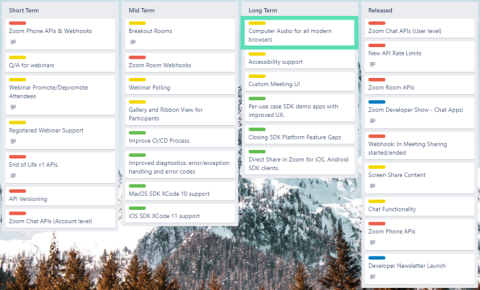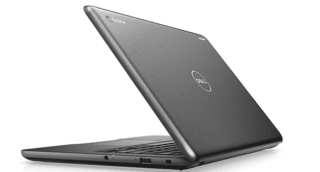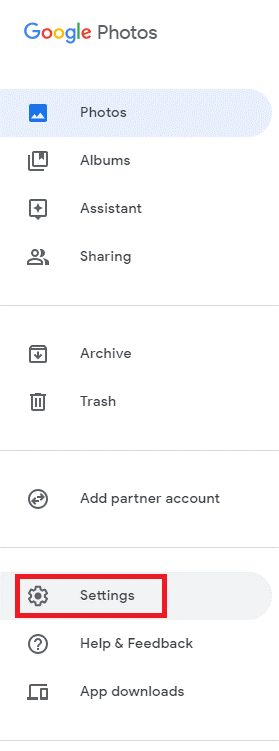Google Meet è il nuovo strumento di collaborazione remota in città che offre funzionalità di videoconferenza e audioconferenza insieme a funzionalità interessanti come crittografia end-to-end, audio HD, video HD e molto altro. Google Meet è completamente gratuito durante la pandemia, il che significa che è già utilizzato da molte organizzazioni e utenti, inclusi gli insegnanti , in tutto il mondo.
Se non conosci Google Meet e stai riscontrando problemi con il microfono, non sei solo. Molti utenti hanno segnalato di non essere in grado di utilizzare i propri microfoni per vari motivi e abbiamo compilato un elenco di alcune delle correzioni più comuni che è possibile utilizzare per risolvere il problema. Diamo un'occhiata a loro.
Correlati: Come cambiare il tuo nome su Google Meet su iPhone, Android e PC
Contenuti
Assicurati che il microfono non sia disattivato

A volte il problema potrebbe finire per essere abbastanza semplice, potresti essere semplicemente disattivato durante una riunione di Google Meet e non saperlo. Controlla l'icona del microfono nella parte inferiore dello schermo nella barra delle chiamate. Se è rosso, l'audio è disattivato su Google Meet. Basta fare clic sull'icona per riattivare l'audio. Ciò consentirà ai membri della riunione di ascoltarti a voce alta e chiara.
Controlla la tua connessione hardware se hai un microfono esterno
Se si utilizza un microfono esterno, collegato all'auricolare o separatamente, è necessario prima controllare le connessioni fisiche dell'auricolare/microfono al sistema. Inizia controllando il filo per eventuali tagli o pieghe insolite. Eventuali urti nel cavo potrebbero anche indicare piegature interne nel cavo che potrebbero causare danni al microfono e impedirne il corretto funzionamento.
Se tutto sembra normale, prova a scollegare l'auricolare/il microfono dal sistema e poi ricollegalo. Ciò non solo ripristinerà la connessione all'estremità del sistema, ma eliminerà anche eventuali problemi di connettività hardware che potrebbero impedire il corretto funzionamento del microfono.
Correlati: Come bloccare gli utenti anonimi su Google Meet
Assicurati che il dispositivo di input sia selezionato su Google Chrome
Chrome ha anche la funzionalità per selezionare quale microfono verrà utilizzato per fornire l'ingresso audio a diversi dispositivi. Se riscontri problemi con il microfono con Google Meet, è probabile che l'ingresso del microfono corretto non sia stato selezionato in Chrome. È possibile selezionare il dispositivo di input desiderato seguendo la guida di seguito.
Apri Chrome, fai clic sull'icona del menu " 3 punti " nell'angolo in alto a destra del browser.

Seleziona " Impostazioni ".

Ora seleziona " Privacy e sicurezza " dalla barra laterale di sinistra.

Seleziona " Impostazioni sito ".

Ora fai clic su " Microfono " nella schermata successiva.

Se l'interruttore in alto è disattivato e accanto viene visualizzato il messaggio " Bloccato ", attiva l'interruttore per assicurarti che dica " Chiedi prima di accedere (consigliato) ".

Ora fai clic sul menu a discesa nella parte superiore e seleziona il microfono desiderato che desideri utilizzare in Google Meet.

Chiudi la scheda " Impostazioni " per salvare le tue impostazioni.
Ora sarai in grado di utilizzare il microfono selezionato durante le riunioni di Google Meet, il che dovrebbe risolvere il problema del microfono.
Correlati: Sfondo virtuale di Google Meet: ultime notizie, estensione di Chrome e tutto ciò che sappiamo finora
Assicurati che l'accesso al microfono sia consentito (Windows e Mac)
Se non riesci ancora a utilizzare il microfono all'interno di Google Meet, è probabile che a Chrome o al browser che utilizzi sia stato negato l'accesso al microfono.
Su Windows
Windows ha introdotto una nuova funzionalità per controllare le app che utilizzano il microfono per aumentare le opzioni di privacy. Se non riesci a utilizzare un microfono in Google Meet, dovresti controllare le autorizzazioni del microfono in Windows. Diamo un'occhiata a come puoi farlo.
Apri il menu Start facendo clic sull'icona Start nell'angolo in basso a sinistra e digita e cerca " Impostazioni privacy microfono ". Fare clic sulla prima opzione di impostazione che appare sullo schermo.

Assicurati che l'interruttore in alto per " Consenti alle app di accedere al tuo microfono " sia abilitato sul tuo dispositivo. In caso contrario, attiva l'interruttore per abilitarlo.

Nota: nella sezione " Scegli quali app possono accedere al tuo microfono " cerca Chrome e assicurati che l'interruttore accanto sia attivato. In caso contrario, accendilo semplicemente facendo clic su di esso.
Su Mac
Come su Windows, dovrai concedere a un'app/browser l'autorizzazione per utilizzare il microfono. Puoi accedere alle autorizzazioni del microfono aprendo prima l'app Preferenze di Sistema sul tuo Mac facendo clic sull'app dal Dock o facendo clic sull'icona Apple dalla barra dei menu e quindi selezionando "Preferenze di Sistema".

All'interno delle Preferenze di Sistema, seleziona l'opzione Sicurezza e Privacy.

Se l'icona del lucchetto nell'angolo in basso a sinistra è bloccata, dovrai sbloccarla per apportare modifiche alle tue autorizzazioni. Per questo, fai clic sull'icona del lucchetto e inserisci la password/PIN del tuo Mac.

Seleziona la scheda Privacy in alto, quindi fai clic sull'opzione Microfono dalla barra laterale sinistra.

Seleziona la casella accanto all'applicazione del browser su cui desideri attivare il microfono. Dopo averlo fatto, chiudi il browser e avvialo di nuovo.
Ora dovresti essere in grado di utilizzare facilmente il microfono durante le riunioni su Google Meet.
Controlla i livelli del volume del microfono (Windows e Mac)
Sia Windows che macOS consentono agli utenti di impostare un livello di volume per i microfoni dei loro sistemi proprio come farebbero sui loro dispositivi di uscita audio. Se i livelli del microfono sono bassi, gli altri partecipanti a una chiamata di Google Meet non potranno sentirti correttamente. Si consiglia quindi di controllare i livelli del microfono quando si affronta una situazione del genere.
Su Windows
Puoi controllare i livelli del microfono su Windows 10 aprendo il Pannello di controllo sul tuo computer utilizzando il menu Start.

All'interno del Pannello di controllo, vai su "Hardware e suoni" dalla barra laterale sinistra e seleziona l'opzione "Audio" dal pannello a destra.

Quando viene visualizzata la finestra Audio, seleziona la scheda "Registrazione" in alto. Qui vedrai un elenco di tutti i dispositivi di input collegati al tuo sistema.
All'interno della scheda Registrazione, seleziona il microfono che utilizzi per le chiamate di Google Meet, quindi fai clic sul pulsante "Proprietà" nella parte inferiore di questa finestra.

Quando viene visualizzata la finestra delle proprietà del microfono sullo schermo, fare clic sulla scheda "Livelli" in alto.
Sotto questa scheda, dovresti vedere un cursore all'interno della sezione "Microfono". Trascina questo cursore verso destra a seconda di quanto alta vuoi che sia la sensibilità del tuo microfono. Più trascini il cursore del microfono verso destra, più alto sarà il livello del volume del tuo microfono e questo dovrebbe aiutare gli altri ad ascoltarti meglio su Google Meet.

Una volta apportate le modifiche necessarie, fare clic sul pulsante "Applica", quindi su "OK" per confermare. Avvia/partecipa a una chiamata su Google Meet per vedere se il microfono funziona correttamente.
su Mac
Per controllare il volume del microfono sul Mac, puoi aprire "Preferenze di Sistema" dalla barra dei menu, dal Dock o dal Launchpad.

All'interno delle Preferenze di Sistema, fai clic sul riquadro "Audio".

Quando la schermata Audio si carica, fai clic sulla scheda "Input" in alto, seleziona il microfono che utilizzi per le chiamate di Google Meet e trascina il cursore "Volume di input" verso destra per aumentarne il volume.

Assicurati che il livello del volume sia adeguato pronunciando qualcosa e poi controllando se la tua voce si sente sull'indicatore "Livello di ingresso" sullo stesso schermo.
Riavvia Google Chrome
Un semplice riavvio del browser può anche risolvere i problemi del microfono. Questo può svuotare la cache, riavviare le estensioni in background e, soprattutto, liberare spazio extra che potrebbe causare problemi con il microfono. Sebbene il riavvio possa semplicemente chiudere e riaprire l'app, non sempre elimina tutti i processi in background e le estensioni in esecuzione per Chrome.

Per riavviare correttamente il browser, apri una nuova scheda e digita " chrome://restart " nella barra degli URL. Questo riavvierà completamente Chrome, il che dovrebbe eliminare eventuali processi in background in conflitto che potrebbero interferire con il funzionamento del microfono.
Correlati: Come rimuovere completamente la scheda Meet da Gmail
Riavvia il tuo sistema
If restarting your browser does not help solve your microphone issues then you can try restarting your system. This will get rid of your system’s cache files and background processes that might be interfering with the functioning of your microphone. It will also release charge from the capacitors of your system which should take care of any conflicting electronics that might be preventing your microphone from working (only external mics).
If you have an external microphone, then turn off your system, wait for 20 seconds and then start your system again. If you have an in-built microphone or a headset then simply use the restart command from your Power Menu.
Restart your Microphone using CLI (Mac only)
Mac systems use an integrated optimization system that helps microphones work seamlessly across different devices. If you are unable to use your microphone on your Mac then you can try restarting the microphone using CLI. Use the guide below to restart your microphone.
Note: You will need administrator privileges to complete this process.
On your Mac system, open the Application folder in your Launchpad, select ‘Utilities’ and launch ‘Terminal’. You can also open the Terminal app from the Launchpad or Spotlight.

Enter the following command in Terminal:
sudo killall coreaudiod
… and hit Enter to execute it.

Now enter your credentials in the dialog box to restart the service and press Enter.
You should try joining your meeting on Google Meet again and your microphone issues should now be resolved.
Troubleshoot your Microphone on Windows
If something goes wrong with your computer’s microphone, Windows will be able to tell what might be the issue you’re facing and might even fix it for you, if possible. This is done using the native Troubleshoot tool that’s available on Windows 10 which you can use to solve problems related to your computer’s microphone.
For this, open the Windows Settings app from the Start menu or Action Center.
Inside Windows Settings, go to System and click on the ‘Sound’ tab from the left sidebar.
On this screen, click on the ‘Troubleshoot’ button under the ‘Test your microphone’ section.

If there’s a problem with your microphone, the tool should be able to detect it and you can then follow the on-screen instructions to get it resolved.
Restart Windows Audio Service
If you have a Windows PC, you can try restarting the Windows audio service to fix the microphone issues that you are facing in Google Meet. Follow the guide below to help you get started.
Press the key combination ‘Windows+R’ on your keyboard simultaneously. This should bring up your ‘Run’ dialog box.

Now type ‘services.msc’ in the Run dialog box and hit Enter on your keyboard to execute the command. This will open the services window on your PC.

Now find ‘Windows Audio‘ in the list.

Right-click on the service and click on ‘Properties’ from the sub-menu that appears.

Click on ‘Stop’. This will stop the service.

Once stopped, wait for a few seconds and then click on ‘Start‘ again.

My OEM add-ons restart the service automatically which can be the case for you.
Note: In the properties window, under the ‘General’ tab, click on the drop-down menu beside the ‘Startup Type’ option and select ‘Automatic’ if not selected. Click on ‘Apply’ in the bottom right corner to apply your changes.

Restart your system.
The Windows audio service will now be automatically restarted on your system’s next bootup which should solve any microphone issues that you were having with Google Meet.
Switch to a Wired Headset
If you are using a Bluetooth headset with an in-built microphone then chances are that Meet services are conflicting with the wireless tech required for your headset to function properly. This is a known issue and many people trying to use a Bluetooth headset with Google Meet around the world are facing the same issue.
Google is expected to fix the issue with future updates, but for now, the only workaround seems to be to use a wired headset with an in-built microphone or to use an external microphone. This will solve all your audio issues with Google Meet and allow you to use the microphone properly.
Free Up System Memory
Real-time audio streaming and input require a decent amount of memory and processing power. If you are on a low-powered system and intermittently face microphone issues now and then, it could be there is not enough free memory for the microphone to work properly with Google Meet.
Google Chrome also uses a significant amount of your RAM and processing power which could also be interfering with your Google Meet experience. To fix these issues, you should start by closing any background applications that could be using the resources of your system.
You should also close any background tabs in Chrome other than Google Meet. This should solve your microphone issues with Google Meet.
Ensure that your Microphone is selected in Windows Settings
Windows also give you the ability to select your default microphone. If a different microphone has been selected in Windows audio settings than the one that you wish to use with Google Meet then it could be conflicting with the background services which could be the cause of your microphone issues. Follow the simple guide below to select your desired microphone as your default audio input device.
Open the Control Panel.

Click on the ‘Hardware and Sound’ category and select ‘Sound’ to open up your sound settings.

Now select the ‘Recording’ tab at the top.

You will now be able to see a list of all the audio input devices connected to your system. Select the microphone that you want to use as your default audio input device and right-click on it.

Select ‘Set as default communication device’ from the submenu that appears to start using that microphone as your default audio input device.

Once done, click on ‘Ok’ at the bottom right corner and close the window.
Your microphone should now be able to work without any issues during meetings on Google Meet.
Update your Microphone drivers (Windows only)
Sometimes your microphone drivers on your Windows system could be outdated which might be preventing your microphone to work properly in Google Meet. You should try to update your microphone drivers to fix these issues. Follow the guide below to help you easily update or reinstall your microphone drivers on Windows 10.
Type ‘Device Manager’ in your taskbar search bar and open the first application that shows up in the search results with the same name.

Now click on the drop-down menu beside ‘Audio Inputs and outputs’

Select the microphone that you wish to use with Google Meet.

Right-click on the microphone and select ‘Properties’.
Now click on the ‘Driver’ tab at the top to open up driver options for your device. Now if the option for ‘Update Driver’ is not greyed out, click on it to update the drivers for your device.

Your microphone drivers will now be updated and you should now be able to use the concerned microphone with Google Meet. Although most microphones are plug-and-play in today’s day and age, this could still help solve your issue depending on your microphone.
Disable Audio Enhancements
There is an option to enable audio enhancements for the microphone on Windows. While this helps improve audio quality for your microphone, this setting is known to interfere with the functioning of Microsoft Meet.
If you are having issues with your microphone, then chances are that audio enhancements have been enabled for your microphone in Windows. Follow the guide below to help you disable audio enhancements for your microphone.
Open the control panel on your Windows PC, click on ‘Hardware and Sound’, and select Sound. This will open the sound settings for your Windows system.

Click on the ‘Recording’ tab at the top of your screen, select the microphone you wish to use during Google Meet meetings from the list, right-click on it, and select ‘Properties’.

Now in the Microphone Properties window, select the ‘Advanced’ tab from the list at the top. Under the ‘Single Enhancements’ option, uncheck the box beside ‘Enable audio enhancements’.

Audio enhancements will now be disabled for the microphone in question. You should now be able to use your microphone during Google Meet meetings.
Clear Google Chrome’s Cache
You can try to clear the cache on Google Chrome to fix your microphone settings. This will get rid of any stored temporary files that might be interfering with the Google Meet extension. Follow the guide below to clear the cache on Google Chrome.
Open Google Chrome, click on the ‘3-dot’ menu icon in the top right corner.

Select ‘More Tools’.
Now select ‘Clear browsing data’.

In the next window, select ‘All-time’ in the time range drop-down menu.

Uncheck the box for ‘Browsing History‘.

Lastly, click on ‘Clear data’ to clear all the cache files.

Your cache files will now be cleared and you should now be able to use the microphone in Google Meet.
Close FaceTime from the background
Many users on Mac systems have reported Facetime interfering with Google Meet which causes the microphone to malfunction. If you use Facetime regularly then you should try closing the application in the background before joining a meeting in Google Meet. This should help solve any audio input issues that you were facing with the Google Meet extension.
Sign OUT, then back IN into your Google account
Some users having issues with microphones in Google Meet have reported that signing out of your Google account and signing in again has helped solve this issue. You can try this method to see if it fixes your issue.
To sign out, simply click on your profile icon in the top right corner of your browser and click on Sign out. Simply sign in to your account again now and try to join a meeting on Google Meet. You should now be able to use your microphone during Google Meet meetings.
Disable Experimental Flags on Google Chrome
If you have enabled any experimental flags in Google Chrome then chances are that they are preventing your microphone from working properly in Google Chrome. You should disable any experimental flags and try to use your microphone again.
Simply type ‘chrome://flags’ in your URL bar and hit enter to access the flags page. Now scroll through the options and disable any enabled tabs by click on the drop-down menu beside it and select ‘Disable’.
Update Google Chrome
Google Meet and its corresponding extension for Chrome was recently given a new overhaul by Google chrome to support the recent influx of users. If you are using an older version of Google Chrome then chances are that it is incompatible with the latest version of Google Meet and the Google Meet extension.
Download the latest stable build of Google Chrome from this link and install it on your system. You should then be able to use your microphone in Google Meet without any issues.
Manually Update Google Meet extension
If nothing seems to work, you can try updating your Google Chrome extensions manually. Simply follow the guide below to help you get started.
Open Google Chrome on your system and type ‘chrome://extensions’ in your URL bar and hit Enter.

The extensions settings page will now open up. In the top right corner, turn on the toggle for ‘Developer Mode’.

Now simply click on ‘Update’ and chrome will manually update all the extensions installed on your system including Google Meet.

You should now be able to use the microphone freely in Google Meet without any persistent issues.
We hope these fixes helped you solve your microphone issues with Google Meet. If you have any suggestions for us, feel free to get in touch with us using the comments section below.
RELATED:
Perché alcuni suoni vengono ridotti in Windows?
Durante una riunione, Windows riduce il rumore proveniente da altre fonti. Ciò non è dovuto a Meet ma a una funzione di Windows.
Gli altri partecipanti possono ascoltare il mio screen reader, il lettore musicale o altre applicazioni
A seconda del sistema operativo e del dispositivo audio, i suoni provenienti da altre schede o applicazioni del browser potrebbero essere ascoltati da altri partecipanti. Per evitare che altri suoni vengano captati dal microfono, utilizzare le cuffie.

























































![Come risolvere lerrore schermo verde di Windows 11 [8 modi] Come risolvere lerrore schermo verde di Windows 11 [8 modi]](https://cloudo3.com/resources8/images31/image-5564-0105182715287.png)

















